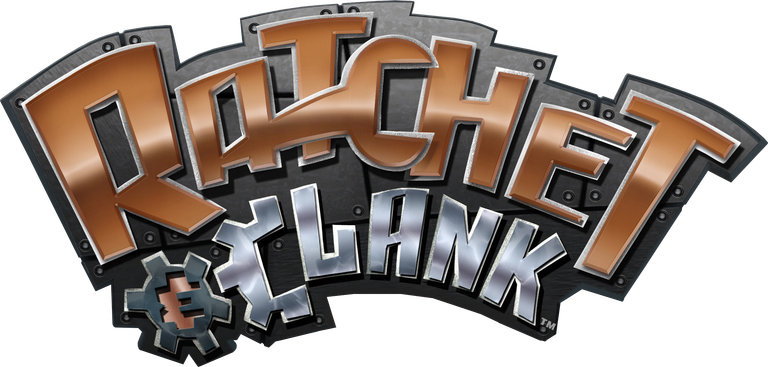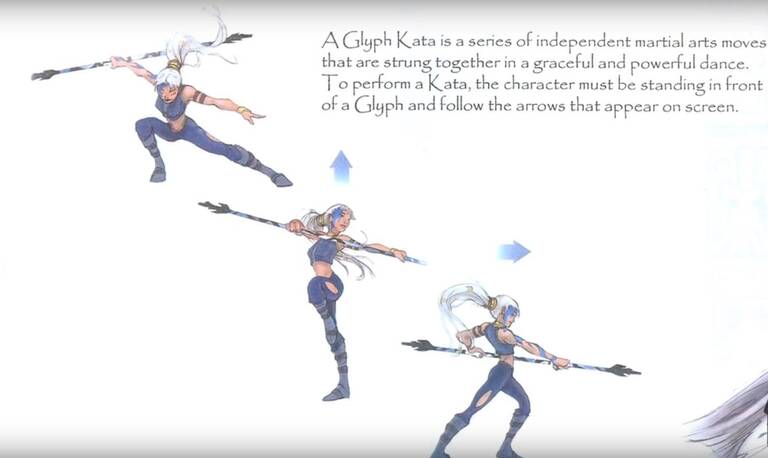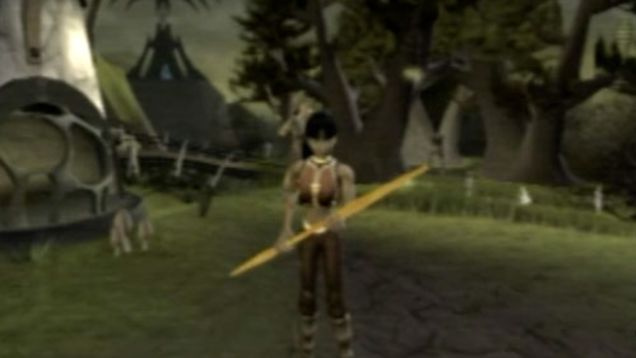KyoZz
Tag, you're it.

Presented with great fanfare during the conference of the PlayStation 5, Ratchet & Clank: Rift Apart will be available on June 11, 2021. With a successful artistic direction and dazzling graphics, the game from Insomniac Games is one of the most anticipated exclusive from Sony.
With new characters and the assurance of taking full view with its sumptuous sets and special effects, the title of Burbank's proteges will undoubtedly be a showcase of console functionality.

While waiting to be able to lay our hands on this little gem, the publisher is making us wait by offering, as part of the Play at Home initiative (launched during the first confinement), the possibility of recovering the formidable Ratchet & Clank for free.
No subscription needed, just download and play. To welcome the return of this formidable operation, I've decided to look back on the genesis of the Ratchet & Clank series born almost twenty years ago.
It's been almost two decades since Ratchet and his robotic sidekick joined the PlayStation family. It is by building on the experience gained with Spyro the Dragon that the American studio is setting out on new projects.
At the time, the PlayStation 2 was in the starting blocks, and the developers of Insomiac were in the same boat as creators around the world.
The PlayStation 2 is a real gas factory, hard to understand and the beginnings are very difficult. With phenomenal raw power, it is a multiprocessor machine (including the famous Emotion Engine) that requires a considerable investment - both material and human.
Upon release, it will take nearly a year and a half to detect the potential of the beast and no longer see empty, sullen and unambitious works appear in the bins.
Trial and error
At the time, Insomiac's bet was risky. Spyro is a working license and they can count on the support of Universal Interactive, the owner of the franchise.
But Ted Price, the studio's founder, feels the time for empowerment has arrived. With his team, in order to perform technical tests, he is developing a project that will not go beyond the framework of design: Monster Knight. In those years, the Pokémon phenomenon was emulated and the Californian developers were inspired to imagine an even more ambitious concept. The main character, Madi, does not make creatures fight but uses them outright as weapons, equipment (armor, objects…) and even mounts! As the player progresses, they evolve their monsters - each with their own unique abilities - to gain access to new locations.
The concept, very promising on paper, will never see the light of day. And that's a shame if we are to believe the binder unearthed by IGN and presenting the outlines of the project.



After this false start, Insomniac Games plans an adventure combining puzzles and exploration a la Zelda and Tomb Raider. Entitled Girl with a Stick (code name I: 5, pronounced "High Five"), the title will be in gestation for six months before Ted Price, on the advice of his team (who didn't "feel" this work) , decide to abandon the project.
If there's anything endearing about the universe, developers struggle to find a clear direction.
The gameplay, as can be seen in this video, is nothing new and the game just isn't fun:
Despite an interesting dark side and a storyline tinged with mythology (African first, then Mayan), the mechanics are soporific. Sony decision-makers (including producer Connie Booth) notice this and warn Ted Price:
What they said to me was, "Okay, if you decide to release this game, we will support you but we sincerely believe that there is no market for this title. But we will support you. 'It was really cool, it was a good approach because I think in a lot of cases the publisher would have come along and said,' We don't like this game, so we're gonna l 'to cancel'. We would have defended ourselves to be able to continue. That way it forced us to look beyond and say to ourselves, 'Okay, they're telling us this and half the team thinks the same thing so let's do something different.'



Connie Booth believed at the time that the adventure game market was saturated and that their title might end up in front of many games of the same genre. She also feared that focusing on a dark and adventurous work will lose everything that makes the strength of the studio - which stood out with the cartoon universe of Spyro.
In March 2001, Insomniac Games, through the voice of its boss Ted Price, decided to start all over again for the second time.
The staff, who had lost all motivation, is immediately reboosted. Brian Hasting, Creative Director, wrote a very brief description of an "alien who travels from planet to planet collecting weapons and gadgets." The concept is simple but appeals to the team.
This latter sets up various tests to see if the project was viable. It will take two weeks for Insomniac to come up with a concept that holds up. Deep down, the developers see a potential that previous attempts did not have.
Ratchet & Clank
As he lets his pencil slide without having a precise idea, David Guertin, the studio's main designer, begins to sketch a funny character resembling a lizard with an extendable arm and a tail used to grip surfaces or to swing through branches.
The character is nice but lacks panache. Guertin then relied on his ideas and those of his sidekick, Oliver Wade. He begins by depicting a protagonist resembling a cat (an animal that the audience can more easily relate to) and then imagines a large creature with the look of a dog.

Designer David Guertin's very first draft
Unconvinced by what he has just drawn, he chooses to do a mixture of the two ... and the magic operates after a few days of trial and error. The hero Ratchet is taking shape - both on paper and on screen - but he has no sidekicks at the time.
For many weeks, the staff decides to focus on the gameplay by imagining many weapons and gadgets. Each member has their own idea, from the most realistic to the most zany. It is in this way, according to a common reflection, that the universe of the future game takes shape.

In November 2001, nearly eight months after Girl with a Stick stopped, the new project could begin.
To meet the ambitions of the PlayStation 2, the team has grown from 20 to 35 people. Meanwhile, Jason Rubin, co-founder of Naughty Dog (with Andy Gavin), offers Ted Price to come and see the new 3D engine that his staff has developed for Jak & Daxter.
Since the days of Crash Bandicoot and Spyro, Naughty Dog and Insomniac Games have been in regular contact and are keen to give each other tips. Rubin's call is lifesaving: Naughty Dog uses a very innovative display environment engine.
Equipped with this new tool, Insomniac Games spends long weeks learning about the method - which is only one tool among all those put in place by Insomniac internally. In return, Ted Price will offer a homemade tool to Naughty Dog, who will in turn use it to develop Jak II: Outlaw. An exchange of good practices!


As the universe grows, designers feel that something is missing in their project: a sidekick!
Ratchet needs a partner with a different temperament who can create a humorous bond between situations. Using a second character is also a good idea to diversify the objectives and gameplay. It was under this idea that Clank was born.
Initially, it is a childish version of a robot inspired by C-3PO, the famous companion of R2D2 in Star Wars. The problem is, he's just a cosmetic addition and doesn't add anything to the game. The developers then make him an equal protagonist to Ratchet with a strong temperament.
Little by little, they arrive at the design of the little robot that we all know. As for Ratchet, he finds a definitive identity imagined by Ted Price. This is a "Lombax"!


From the idea to the execution
Insomniac Games is now ready to start the full development but the first (embryonic) prototype struggles to display long distances. Mark Cerny, who offers his services to various studios, invites them to create sets in the form of dioramas.
In short: do not try to create an open world, but give the illusion of it to the player by compiling a set of miniature levels, a bit like islands linked together.


The method is causing a sensation and the team is gradually finding its cruising speed. For the Metropolis level (which will become the central level), Cerny slips the idea of bringing greenery to color the environment (and give it a more organic look) while the staff is inspired by the Fifth Element to simulate the flying traffic.
The Jungle level, meanwhile, is a melting pot of various inspirations ranging from Zelda to the Little Prince through Nausicaa, Conker's Bad Fur Day, Banjo-Kazooie, Super Mario 64 or even The Iron Giant.
In addition, Super Metroid gives the broad outline of the progression of the player since Ratchet & Clank is conceived as a Metroidvania. In this sense, each gadget provides access to a place previously inaccessible and this involves a lot of back and forth.
So as not to scatter, and while ambition climbs as the potential of the console is revealed, the studio calms its enthusiasm (despite two or three original sequences such as the train or the overboard) and builds its game like an amusement park by making it so that the player can easily return to the central hub.




A slight transformation for the Japan market
Like Crash Bandicoot, whose eyes are shaped like Pac-Man on the archipelago, Ratchet changed his face when he arrived in Japan.
His face is rounder and his eyes are much bigger and brighter, which gives the character a more expressive look.
In Japan, the license is quite popular and there is even a manga called Ratchet & Clank: Bang Bang Bang! (which appeared in Coro Coro Comic magazine from 2004 to 2008)

A remarkable release
After a year of intensive production, Ratchet & Clank was released on November 4, 2002 in the United States (November 8, December 3 in Japan) and won over a large part of the media and PlayStation 2 owners.
Commercial beginnings are a little shy but word of mouth and very funny advertising campaigns give the necessary impetus to the production of Insomniac Games. To achieve this result, the studio eventually had to hire additional staff (45 people at the end of development in total) but it was a good decision.
In total, Ratchet & Clank offers no less than 35 weapons (between 50 and 60 weapons were considered) and seduced by its construction, its atmosphere, its universe and its action mechanics



The franchise has thus grown over time, with each episode bringing its share of innovations and technical developments (Ratchet & Clank 2, Ratchet & Clank 3). There was also some real risk taking like with Ratchet: Gladiator, a much darker and more action oriented episode.
The transition from PlayStation 2 to PlayStation 3 materialized through the FPS Resistance: Fall of Man, one of Sony's first console titles for Insomniac. The game served as an apprenticeship for Insomniac Games who were able to engage with a new episode of Ratchet.
Entitled Operation Destruction, it was a launching pad for an unprecedented quadrilogy. The license also had its share of spin-offs, notably on PSP. Over the years, a lot of fans have felt that the US studio is pulling the rope and it is true that some episodes are really patchy.
But in 2016, Insomniac got everyone to agree with the fantastic Ratchet & Clank, a replay of the original for the PlayStation 4. Mesmerizingly beautiful - worthy of a Pixar - this remake is a real gem! Massive explosions, rock-solid fun, pervasive humor, missing out on Ratchet & Clank would be heresy if you like the genre.
If you have a PlayStation 4 or PlayStation 5, just head over to your console in the Play at Home tab to enjoy it! Please note, the offer runs until April 1!
As proof of the franchise's popularity, a Ratchet & Clank animated film was released in 2016. In this adventure, the lombax dream of becoming a galactic ranger and meets his metallic sidekick. Together, they search for a way to stop President Drek (inspired, according to the team, by Universal Interactive's suit and neckties that flattened their hair backwards) ravaging the galaxy for simple mercantile purposes. Overall, the feature film has divided sharply, largely due to a lack of rhythm but it remains nonetheless a nice entertainment for those who love the series.
Sources:
- This remarkable article by Jeuxvideo.com
- The origin of Ratchet & Clank
- Making of Ratchet & Clank
- Ratchet & Clank 10th Anniversary Behind the Scenes
- Making of Ratchet & Clank OPSM
- How Ratchet & Clank is changed in Japan
- Full Moon Show - A Girl with A Stick
- Nuits blanches à Seattle - L'Histoire d'Insomniac Games - Bounthavy Suvilay
Other thread you may like:
Last edited:
